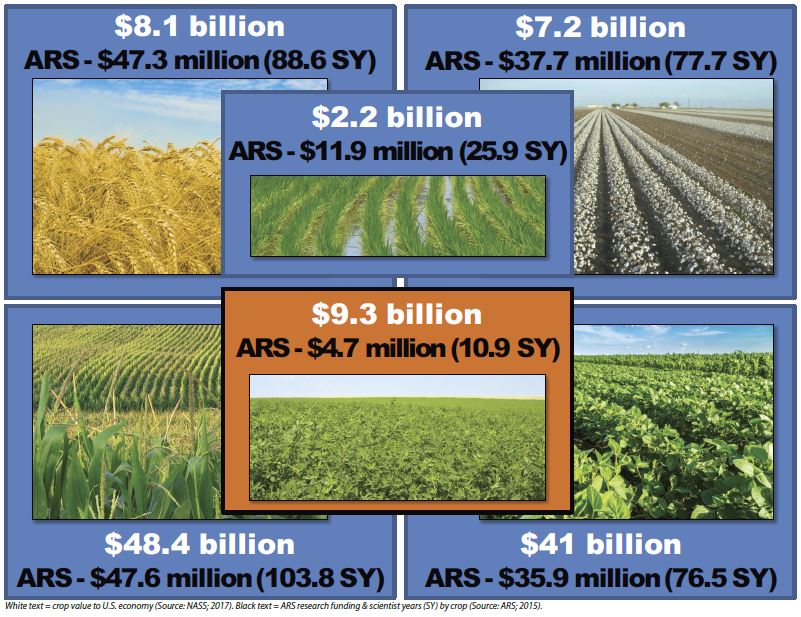St. Paul, Minnesota, USA
March 26, 2018

Alfalfa is the third most valuable field crop produced in the U.S., valued at over $9.3 billion, $1.2 billion more than wheat, according to 2017 figures recently released by the U.S. Department of Agriculture’s National Agricultural Statistics Service (NASS). “Alfalfa needs to take its rightful position along side corn, soybean, wheat, cotton, and rice which are often referred to as the “Big 5,” said Beth Nelson, President of the National Alfalfa & Forage Alliance (NAFA).
"While alfalfa is best known as a premium livestock feed, it has gained attention for its value in carbon sequestration. Alfalfa is key to sustainable agricultural systems and is an economic engine in rural communities – its value for soil conservation, nitrogen fixation, energy savings, crop rotation, and wildlife habitat is unsurpassed," said Nelson. "However, alfalfa must offer a competitive value for farmers in order to provide these benefits and maintain or expand its acreage base. Being recognized in policy and public research funding decisions is critical in keeping pace with other cropping choices. Sadly, public research funds have been sparse, particularly when compared to funds available for program crops such as corn and soybean."
NAFA has worked to increase legislators' and U.S. agency officials' awareness of the crop. Last November, USDA's National Institute of Food and Agriculture awarded more than $2 million in Alfalfa and Forage Research Program (AFRP) funding to study an array of topics affecting the alfalfa industry. "It's a start, but not enough for alfalfa to be on par with the “Big 5” ̵ not only in terms of public research funding, but also policy issues, particularly as the new Farm Bill takes shape," Nelson says.
In February, NAFA representatives talked with House and Senate Ag Committee staff about the need for risk management tools providing an adequate safety net for forage farmers. Because alfalfa is not a program crop, current risk management tools contained in the Farm Bill ̵ Agriculture Risk Coverage and Price Loss Coverage ̵ are not available to alfalfa farmers. This often forces farmers to shift acres from alfalfa into program crops.
In 2017, alfalfa farmers in 42 states produced dry hay valued at $7.9 billion. In 17 of those states, farmers also produced alfalfa haylage, at a worth of $1.4 billion, bringing total crop value to $9.3 billion, according to NASS. “Alfalfa is bringing its value and environmental benefits to almost every state in the Nation – it is time this little rascal gets recognized.”